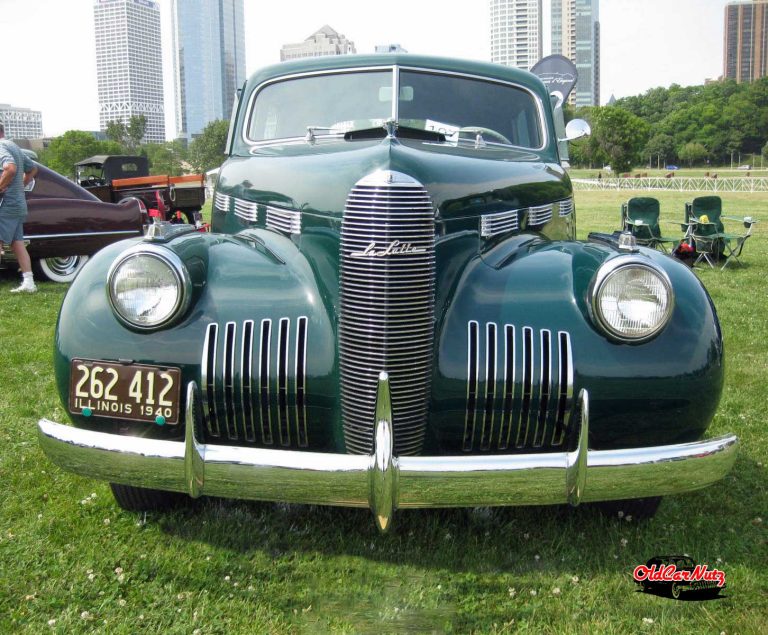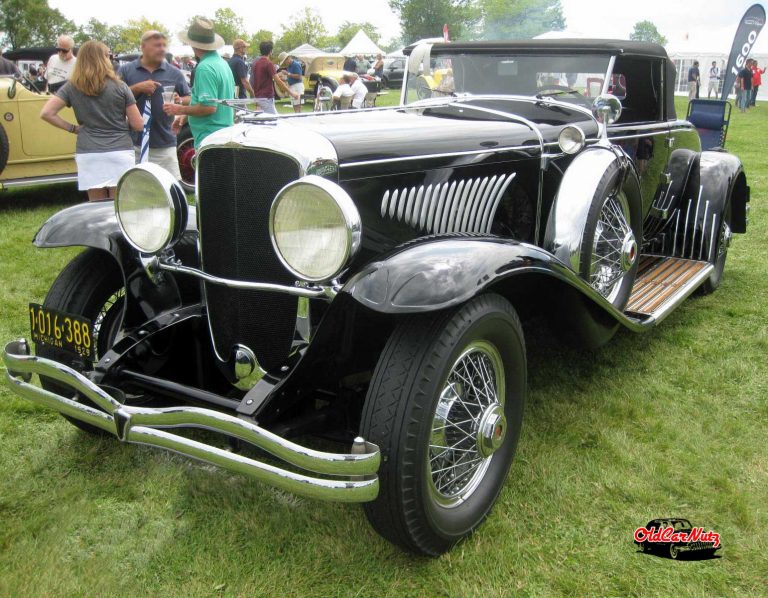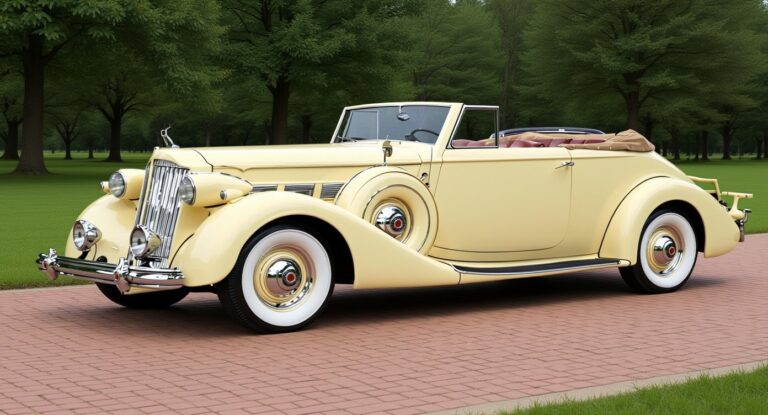The 1953 Kaiser Dragon exemplified classic 1950s American luxury cars, blending distinctive design with innovative features. This rare model, limited to 1,277 units, featured a 3.7-liter “Supersonic” inline-six engine producing 118-120 horsepower.
Its opulent interior echoed the iconic automotive interiors of the 1950s, with its bamboo-patterned vinyl, Belgian linen upholstery, and gold-plated accents. The advanced safety elements included a padded dashboard and a pop-out windshield.
At $3,924, it represented Kaiser’s ambitious vision, positioning the Dragon among the most collectible postwar luxury cars whose auction values reveal its enduring significance.
Luxury Meets Innovation
While many classic 1950s American luxury cars prioritized flash over function, the Kaiser Dragon masterfully merged opulence with engineering innovation. Its 3.7-liter inline-six engine delivered 118 horsepower through an advanced Hydra-Matic transmission, while over 200 pounds of sound insulation created a whisper-quiet cabin.
The 3-speed automatic transmission ensured smooth power delivery in all driving conditions. The Dragon’s sophisticated blend of bamboo-patterned vinyl and Belgian linen upholstery elevated its interior refinement beyond mere aesthetics.
Technical excellence continues throughout the vehicle, reflecting postwar car design trends of the 1950s. The rigid frame chassis maintained a low center of gravity, ensuring exceptional stability.
Standard air conditioning and extensive climate controls showcased Kaiser’s commitment to passenger comfort. Gold-plated exterior accents and personalized cabin plaques added distinction, while the innovative “Bambu” vinyl roof treatment created a striking hardtop appearance despite the vehicle’s four-door configuration.
Design Excellence
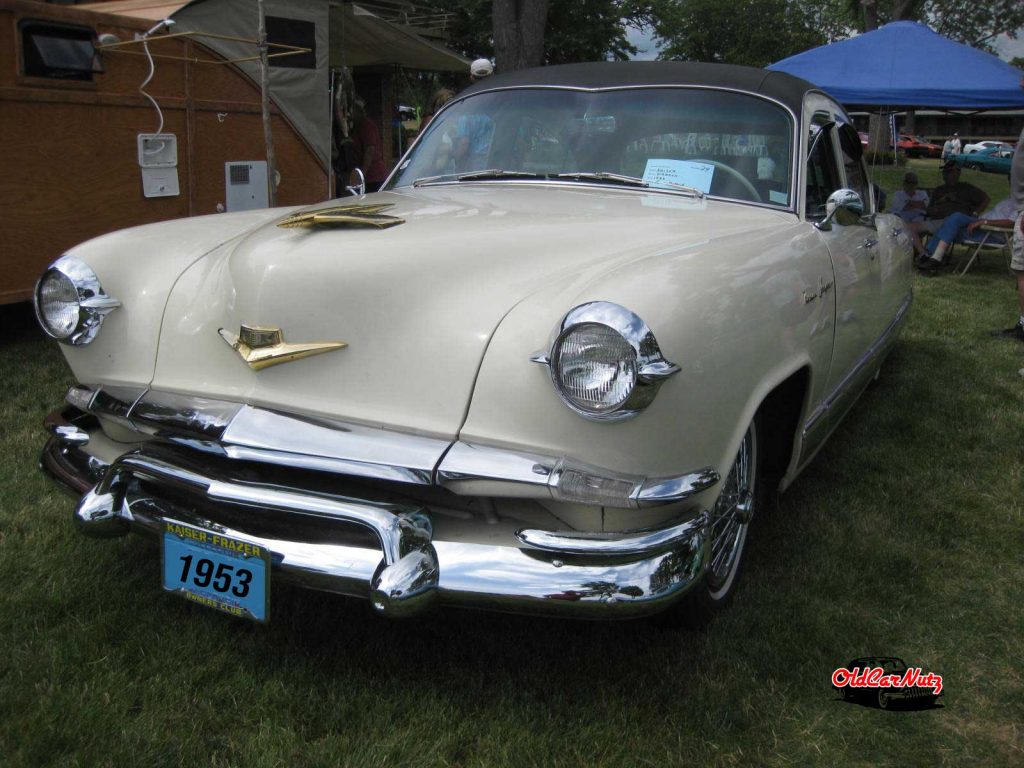
The Kaiser Dragon’s design prowess shines through every carefully considered detail, making it a standout in the history of Kaiser Motors and its legacy. From its distinctive bamboo-patterned vinyl top to the 14-carat gold hood ornament, each element exudes thoughtful luxury.
Henry J. Kaiser’s expertise in efficient manufacturing, from his shipbuilding days, influenced the Dragon’s precise assembly.
The exterior combined chrome wire wheels and whitewall tires with unique finishes, creating an unmistakable presence on the road.
The exterior of this particular car is finished in factory Stardust ivory paint with a textured “Dragon Skin” vinyl roof.
Inside, the cabin showcases a distinctive combination of bamboo-patterned vinyl and Laguna cloth, a heavy-duty Belgian linen featuring midcentury-modern rectangular patterns.
Gold-plated interior trim accents complement the brocade upholstery, while long-filament Calpoint carpeting adds refined comfort underfoot.
Over 200 pounds of sound insulation create an exceptionally quiet ride, enhanced by the four-door hardtop’s rigid construction. With a shipping weight of 3320 pounds, the Dragon’s substantial build contributes to its solid, premium feel.
Modern amenities include factory-installed AM radio with front and rear speakers, power steering, and standard heating and defrost systems.
The interior’s attention to detail extends to personalized engraved medallions on some glovebox doors, while the premium materials prove remarkably durable, capable of lasting decades with proper maintenance.
Because it was so fully loaded both inside and out, the only additional options available were fog lamps, wire wheels, and a spotlight.
Power and Performance
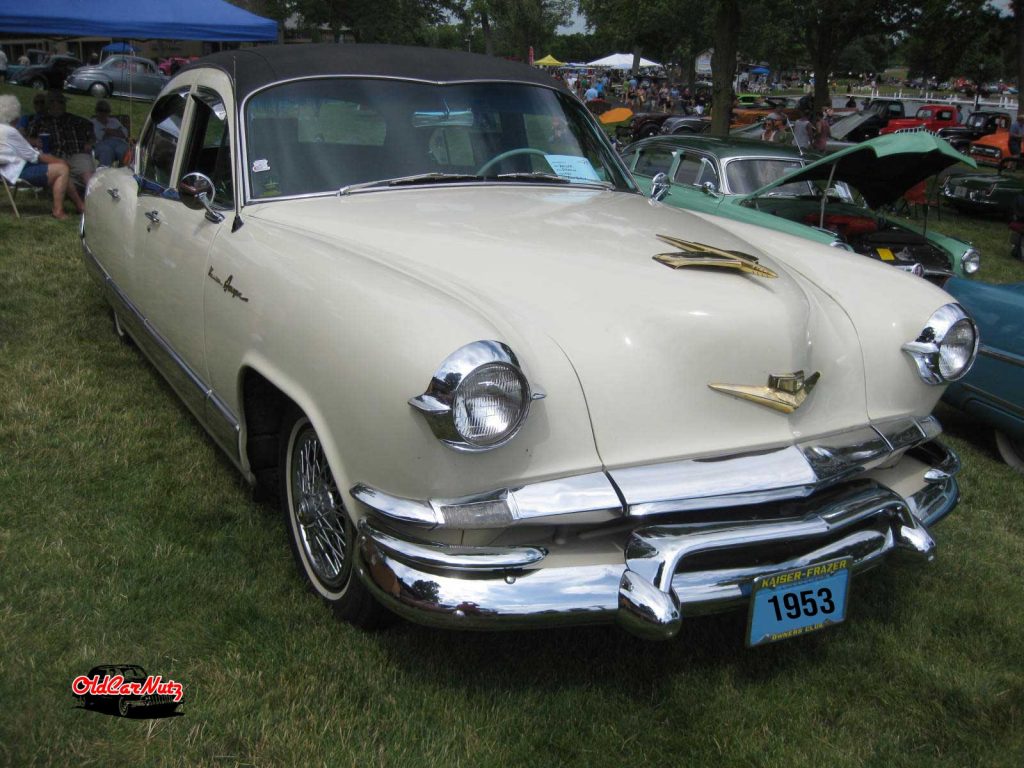
Rumbling beneath the Kaiser Dragon’s elegant hood is a capable 3.7-liter engine, reminiscent of the American V8 engines of the early 1950s in performance spirit, delivering 118-120 horsepower through a smooth-shifting three-speed automatic transmission.
The powerplant generates a substantial 200 pound-feet of torque, channeled through its rear-wheel-drive layout for balanced performance. The innovative Hydra-Matic automatic transmission was standard equipment, enhancing the luxurious driving experience.
While modest by modern standards, the Dragon’s performance metrics were respectable for its era. The sedan reaches 60 mph in 18 seconds and achieves a top speed of 88 mph, while returning a practical 21 miles per gallon.
The front independent suspension with coil springs, paired with a rear live axle and leaf springs, provides a composed ride.
Four-wheel hydraulic drum brakes bring the 3,318-pound luxury car to confident stops, completing a mechanical package that emphasizes comfort over sportiness.
Behind the Wheel
The Kaiser Dragon delivered a commanding driving experience through its Supersonic 226 cubic inch inline-six engine and Hydramatic transmission.
The car’s heavy, solid construction created a plush ride characteristic of luxury vehicles, while nearly 200 pounds of insulation guaranteed a whisper-quiet cabin. Power steering, uncommon for the era, provided enhanced control and maneuverability.
Behind the wheel, drivers enjoyed exceptional comfort with 45.1 inches of front legroom and thoughtfully positioned controls. The padded dashboard featured recessed instruments for both safety and ease of use.
Despite its substantial weight, the Dragon maintained impressive balance, cruising steadily at highway speeds with minimal mechanical noise. The three-speed automatic transmission made both city and highway driving effortless, while the upgraded braking system delivered confident stopping power.
Market Impact
Market dynamics shaped the 1953 Kaiser Dragon’s unique position in automotive history, situating it among rare vintage Kaisers for sale that attract serious collectors today.
Despite all its luxury amenities, it was still powered by the same straight-six engine Kaiser had used since 1947.
And priced at just under $4000, it didn’t compete with the new, comparably-priced 1953 Buick Roadmaster that featured a 188 hp 322-ci V-8.
As a result, Kaiser sold only 1277 Dragon models in 1953, the first and only year of its existence.
The Dragon’s market impact extended well beyond its initial sales period. Auction values, like the $29,700 achieved at RM Sotheby’s in 2015, demonstrate its enduring appeal to collectors.
While parts scarcity challenges restoration efforts, this limitation has strengthened the Dragon’s status as a prized collectible.
The model’s distinctive features and innovative design elements continue to attract enthusiasts, particularly those drawn to 1950s automotive design and the unique story of Kaiser’s bold attempt at penetrating the luxury market.
Historical Significance
Innovation defined Kaiser’s bold entry into America’s postwar automotive landscape. The 1953 Dragon represented a significant milestone as the first American production car to feature 14-carat gold-plated ornamentation, setting new standards for luxury automotive design.
Its pioneering safety features, including the padded dashboard and pop-out windshield, demonstrated Kaiser’s commitment to progressive engineering.
The Dragon’s brief production run, lasting only from October 1952 to May 1953, makes it a rare artifact among those collecting and restoring rare Kaisers, embodying postwar American manufacturing ambition.
As the flagship model from the only major new U.S. automaker established after World War II, the Dragon symbolized both the optimism and challenges of the era.
Its extensive use of unique materials, like the “Bambu” vinyl and Belgian linen, reflected the period’s innovative spirit and desire for distinctive luxury offerings.
Legacy and Value
The 1953 Kaiser Dragon represented a bold experiment in American luxury car design. While not a commercial success, its innovative features and striking aesthetics influenced automotive styling for years to come.
The Dragon’s legacy lives on through its unique bamboo-vinyl interior, distinctive ‘dragon skin’ roof, and reputation as a prized collectible in the classic car market.
Today, surviving examples command respect from collectors as rare symbols of the Kaiser’s innovative spirit.

